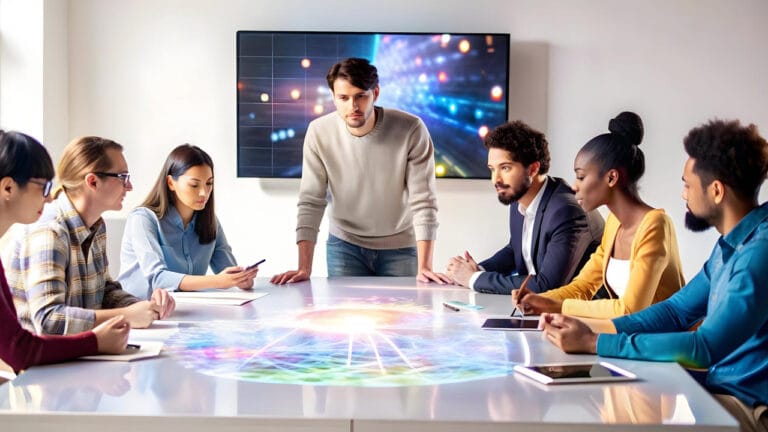Transforming your corporate training programs with gamification can revolutionise how employees learn and develop. By integrating elements like points, badges, leaderboards and challenges, you create an engaging experience that motivates participation and enhances knowledge retention. This approach not only makes learning enjoyable but also caters to different learning styles, keeping your team focused and invested.
Game based training leverages the psychology of rewards and competition to drive engagement. Whether it’s applying skills in realistic scenarios or earning recognition for achievements, these techniques bridge the gap between theory and real-world application. With the right strategies in place, you can foster a culture of continuous improvement while boosting performance outcomes. Let’s explore how you can maximise the impact of gamification in your corporate training efforts.
Benefits of Gamifying Corporate Training
Gamification transforms corporate training by making it engaging, interactive, and rewarding. It combines game mechanics with learning objectives to deliver measurable benefits for both employees and organisations.
Enhanced Employee Engagement
Game based learning programs foster deeper engagement by turning learning into an enjoyable experience. Interactive elements like leaderboards, points, and badges encourage healthy competition among employees. For example, a leaderboard showing top performers in a compliance quiz motivates others to participate actively. When you integrate gamification into your programs, employees feel more connected and invested in the process.
Improved Knowledge Retention
Game based learning methods improve how employees absorb and retain information. Research shows that gamification helps the brain process information faster while reinforcing key concepts through repetition. Role-playing scenarios or simulated challenges are particularly effective as they demonstrate real-world applications of skills learned during training sessions.
Increased Motivation and Productivity
Reward systems embedded within gamified training enhance motivation by providing immediate feedback and recognition for achievements. Offering incentives such as bonus points or extra leave days creates a sense of accomplishment that drives productivity. Teams also benefit from collaborative tasks where shared goals promote teamwork while maintaining individual accountability.
Key Elements of Effective Gamified Learning Programs
Gamified training programs thrive when built around purposeful, engaging elements. By focusing on clear objectives, real-time feedback, rewards, and social interaction, you can maximise both participation and learning outcomes.
Setting Clear Goals
Define specific objectives for your gamified training to ensure alignment with organisational needs. For example, if the goal is to enhance product knowledge within sales teams, structure modules like “Mastering Product Features” or “Effective Selling Tactics”. Incorporate milestones that track progress towards these goals.
Integrating Feedback Mechanisms
Provide timely feedback to reinforce learning and improve employee performance. Use scoring systems or personalised insights tied directly to tasks completed during the training. For instance, after a quiz or challenge in compliance training, immediate results with explanations promote better understanding of regulations.
Creating Reward Systems
Incorporate rewards like points, badges, or tangible incentives to sustain engagement and drive competition. Assign virtual badges for achievements such as completing modules or maintaining high scores on leaderboards. Reward systems activate dopamine responses in learners’ brains while encouraging consistent effort.
Encouraging Collaboration and Social Interaction
Leverage team based challenges to foster collaboration among employees during training sessions. Create activities where groups solve problems together in scenarios such as role-playing games for conflict resolution skills development. These interactions build camaraderie while enhancing knowledge sharing across your organisation.

Best Practices for Gamifying Your Corporate Training Program
Implementing gamification effectively requires thoughtful planning and execution. By following proven strategies, you can create engaging, results-driven training programs that meet your organisational goals.
Define Objectives and Understand Your Audience
Establish clear objectives before integrating gamification into your training program. Align these goals with organisational priorities, such as improving compliance or enhancing skill development. Analyse your audience to identify their learning preferences and challenges. For instance, younger employees may respond well to interactive quizzes, while senior staff might prefer scenario-based problem-solving games.
Incorporate Gamification Into Existing Training Modules
Enhance existing training content by embedding gamified elements like badges, leaderboards, or points systems. This approach is cost-effective and ensures continuity in learning materials. For example, add knowledge-check quizzes to onboarding sessions or introduce role-specific challenges in compliance training modules.
Design Level-Based Challenges and Progress Tracking
Create tiered challenges that allow employees to progress at their own pace. Use multi-level paths tailored to different roles or expertise levels within your organisation. Provide visible progress tracking tools so learners can monitor achievements and stay motivated throughout the program.
Promote Healthy Competition
Encourage participation through friendly competition using leaderboards or team-based activities. Publicly recognise top performers but ensure inclusivity by offering opportunities for all participants to succeed through individual performance metrics or anonymous social comparisons.
Monitor Performance and Adapt Strategies
Track employee engagement metrics such as participation rates, completion times, and quiz scores to evaluate the effectiveness of gamified elements. Adjust strategies based on data insights; if certain features show low interaction levels, refine them for better alignment with learner needs.
Real-World Applications of Gamification in Training
Real-world examples illustrate how gamification enhances corporate training. By integrating game mechanics into learning, organisations create immersive environments that improve engagement and knowledge retention.
Virtual Simulations for Skill Development
Simulated scenarios replicate real-world conditions, allowing employees to practise decision-making without risks. For instance, a virtual simulation game can enable participants to act as industrial plant managers. They make operational decisions aimed at improving sustainability and performance while gaining insights into product applications through challenges and rewards.
Interactive Learning for Operational Standards
Interactive courses focus on specific skill sets using scenario-based tasks. An example is Domino’s “Pizza Hero”, which trains staff on pizza preparation and operational procedures through point-based challenges and achievements. This approach boosts both skill acquisition and motivation by making routine tasks engaging.
Sales Training Through Role-Playing Simulations
Sales teams benefit from role-playing simulations customer interactions within competitive frameworks. These activities hone negotiation techniques and decision-making skills while fostering collaboration through team-based challenges linked to real-world sales dynamics.
Each application demonstrates how gamified training aligns employee growth with organisational goals by connecting learning objectives directly to workplace scenarios.
Final Word
Gamifying your corporate training programme offers a unique opportunity to inspire meaningful learning while keeping employees motivated and engaged. By setting clear objectives, designing meaningful challenges, and maintaining a balance between competition and collaboration, gamification in eLearning empowers employees to take charge of their learning, and ensures that knowledge translates into real-world performance.
The future of training is here—are you ready to level up? Embrace gamification today and transform your workforce into a team of highly skilled, motivated, and achievement-driven professionals ready to tackle any challenge.


